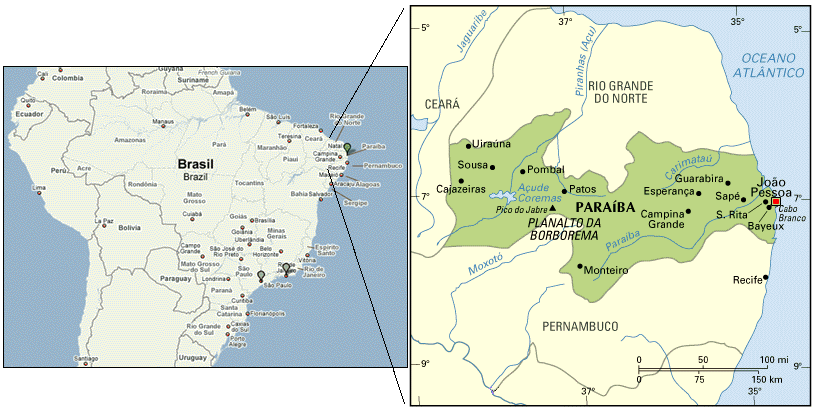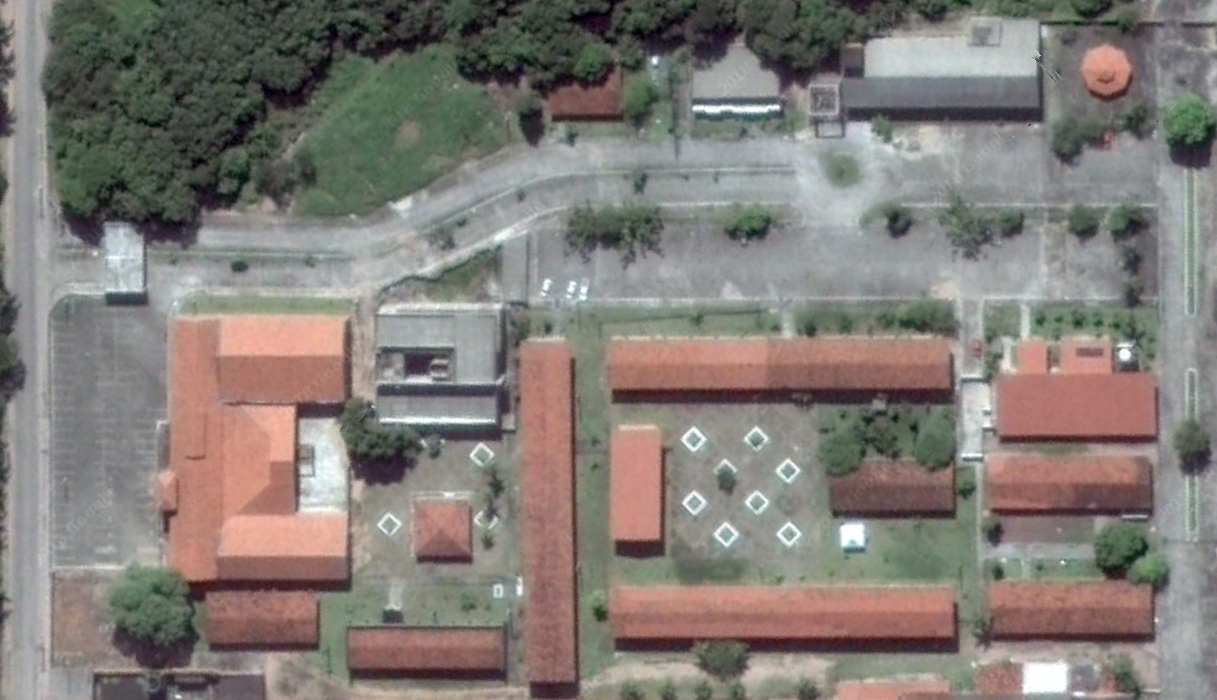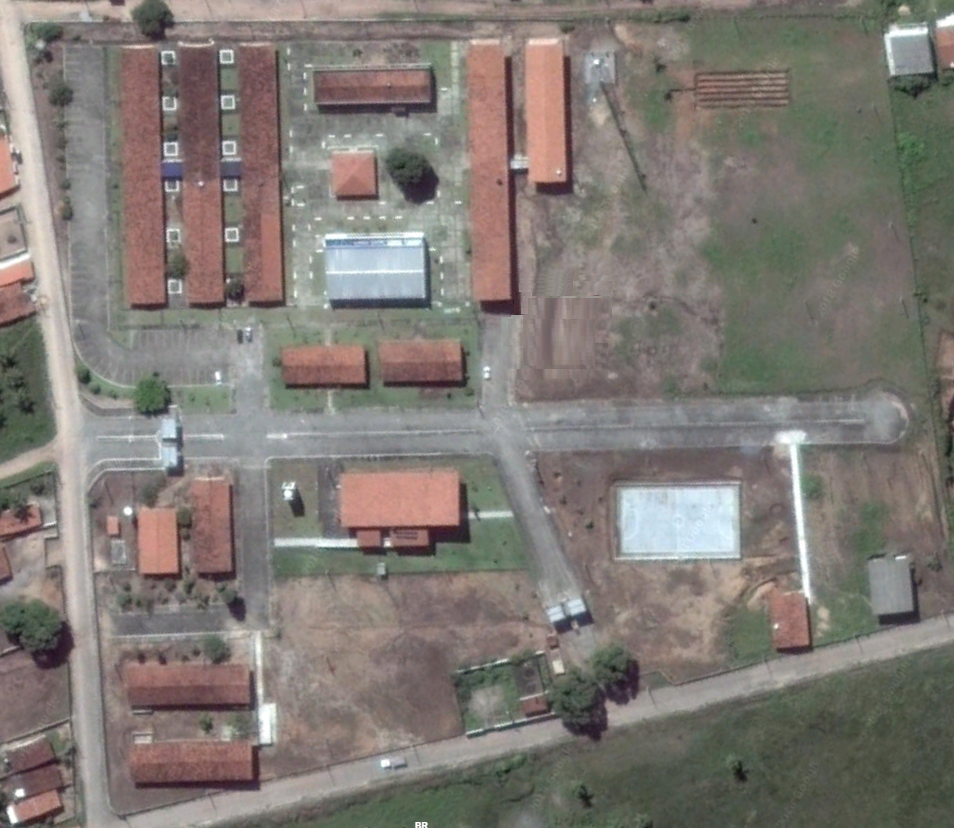Federal University of Paraíba

Federal University of Paraíba is located in Paraíba state (Figure 1), Northeast of Brazil. It is geographically distributed in various cities along the state into various Campi, as folllows:
UFPB Campus I

Federal University of Paraíba is located in Paraíba state (Figure 1), Northeast of Brazil. It is geographically distributed in various cities along the state into various Campi, as folllows:
Specifically in the case of energy management, the interest of this project, the greatest problems are the management of energy utilization and energy consumption. There exist information about the topology of energy distribution in each campus, their individual energy consumption and the total bill to be paid each month, but there is no information about energy information inside the campus, for example, average and peak consumption in each building. If an user decides to install an equipment and it causes problems, for example harmonics, it cannot be detected with the actual management model.
Decreasing energy consumption is one the challenges the Brazilian government has imposed to federal institutions like UFPB. The first step is to know the behavior of the system, in the finest granularity possible, what is very difficult today.
In all the UFPB locations, the power distribution company provides energy, and inside the campus energy distribution almost follows the same structure, a main substation connected to a local distribution network inside of each campus to feed each building. Inside a building, there are various topologies, which sometimes change according the specific necessities.
The main administration has objective to reduce the consumption by improving the management of energy usage, or by producing renewable energy and inserting it in the system of the building by replacing the central feeding. In both of these actions it is necessary a system to manage the energy usage in all campus.
In this Project is proposed the developed of a system to manage the energy consumption in the campus. The proposed system will permits to know the energy consumption of each building, to detect problems in the energy usage, to manage the utilization of energy generated in the campus.

The UFPB - Federal University of Paraíba is a Brazilian university maintained by the Federal Government and located in Paraíba. It has four campuses: João Pessoa (Figure above), Areia, Bananeiras and Litoral Norte (Rio Tinto and Mamanguape). UFPB was founded on the initiative of José Américo de Almeida in 1955, with the fusion of eleven higher level courses that already existed in the state. Its creation took place first through State Law 1,366, of December 2, 1955; five years later, on December 13, Federal Law 3,835 federalized the instituition, creating the so-called University of Paraíba.
The UFPB settled Campus IV in 1976, in the region of Mata Paraibana, more precisely, in the cities of Mamanguape and Rio Tinto, both located in the North Coast microregion. Its activities are geared to the educational, cultural, social and economic needs of the 396,338 inhabitants of the Mamanguape Valley, the micro-region of Sape and the 22 neighboring municipalities. The average distance from these municipalities to Campus IV is approximately 20 km; the CCAE it is about 60 km away from Campus I.


Administratively, the Center for Applied Sciences and Education, the only one that exists in Campus IV, is divided into two units, located in the municipalities of Rio Tinto (Figure 3) and Mamanguape (Figure 4), neighboring cities separated by six kilometers.
Campus IV offers eleven undergraduate courses, three academic master's (one professional) and two specializations. Its departments are:
The structure of each campus is made up by several buildings, each one for a specific department. Although each Campus has specific characteristics, they all have a common administrative aspect, which invariably reflects in a standard for the use of the buildings that make up these campuses.
Maintenance (civil, electrical, etc.) is provided by a department of the central administration, responsible for preventive and corrective actions, management of the distribution network and planning its growing.
Energy distribution in these all the campus starts in an energy substation that receives energy from tm power Distribution Company. From this substation, energy is distributed to each building via the internal distribution system.
The price of the energy delivered to UFPB is regulated by a contract with the Power distribution Company. In this contract are established the and amount for the power consumption by month, name Demand, a penalty for the energy passing the demand, the price of the energy, measured in kWh (kilo watt-hour) that varies if the energy is consumed in the peak time, when there are more consumers in the system of the Power Distribution Company, for example, between 17 to 22 hours in a week day, or out of peak hours. As an example, in first semester of 2015, the prices for the kWh in the peak and out peak are R$ 0.83276 and R$ 0.13900 respectively. Each month the consumption is measured in each campus, the total value is computed according to the contract and power consumption of all campus is summed up and paid by the central administration.
UFPB Campus IV